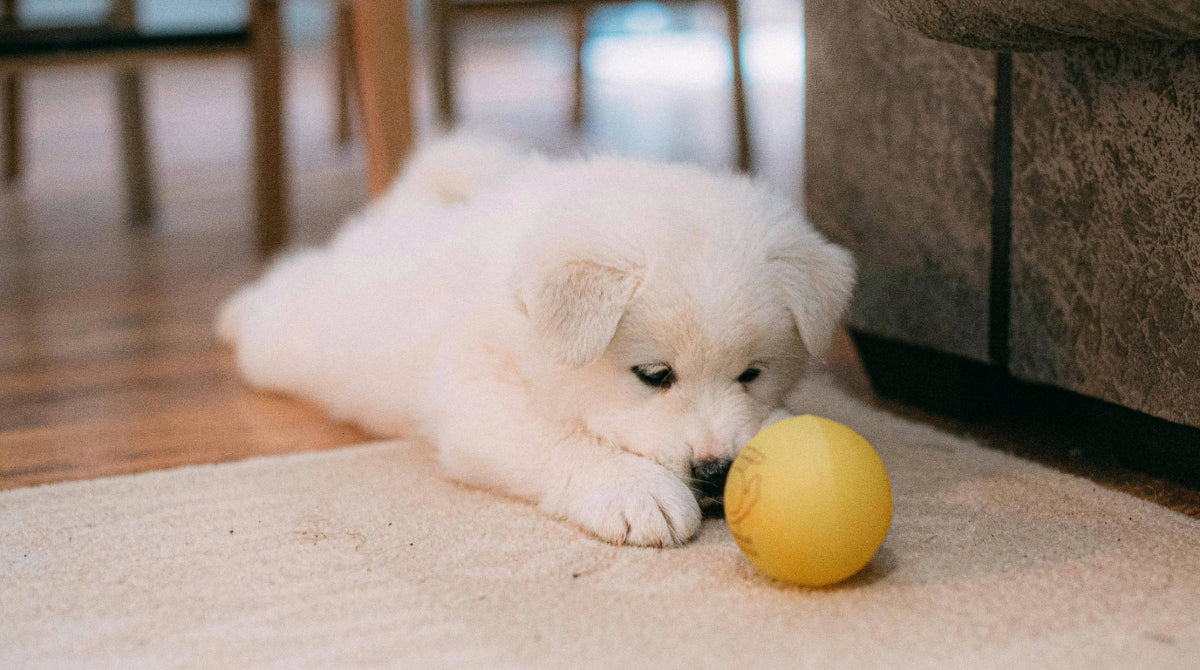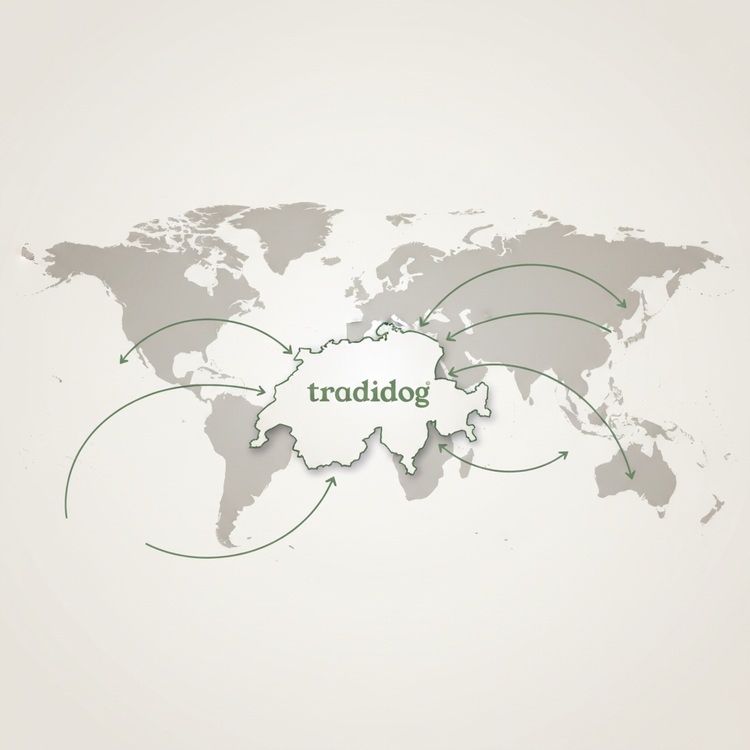
Dogs for Beginners | Part 4 – Before and After Moving In
The time has come! You've chosen the right dog breed, the purchase is complete, and the dog is ready to be picked up. But be careful! The work isn't over just by buying a dog; it's just beginning. In Part 4 of the series "Dogs for Beginners," we'll show you what you still need to organize and consider before buying a dog.
Yes, you heard right, it's part 4! Check out the first three parts of the blog series:
Part 1 – Self-reflection
Part 2 – Suitable dog breed
Part 3 – Buy from a breeder or animal shelter?
1. Buying food
The right dog food should be tailored to your dog's age, size, and breed. There are special puppy foods (junior), adult , and senior dogs, as nutritional needs vary depending on the life stage. Your dog's size also plays a role: Small breeds often require higher-energy food, while larger dogs may need joint support. Also, consider whether your dog has any special dietary needs, allergies, or intolerances.
Amount of feed
- The recommended feeding amount depends on the dog's weight and activity level. For example, a medium-sized, active dog (approximately 15-25 kg) needs between 300-400 grams of dry food daily. However, the exact amount should always be based on the manufacturer's instructions on the packaging.
- Feed types:
Food bowl and water bowl
Food and water bowls should be sturdy and ideally non-slip to prevent tipping. For larger dogs, a raised bowl may be helpful to make eating more comfortable and reduce neck strain. Hygienic materials such as stainless steel or ceramic are also recommended, as they are easy to clean and durable.
Treats
Treats are ideal for training and as rewards. They come in a variety of forms, from small soft snacks for quick training to chew bones for entertainment. Make sure the treats don't exceed your dog's daily calorie needs. Treats should make up a maximum of 10% of their daily calorie intake.
Don't forget to visit our online shop to buy the best dog supplements. Your dog will thank you!
2. Suitable toys
Every child loves toys. Dogs do too. We recommend three toys:
Kong Classic: A durable rubber toy that can be filled with treats. It encourages chewing and mental stimulation and is ideal for dogs who enjoy chewing and want to be entertained.
Tennis ball or fetch ball: Balls are perfect for the game of fetch, which many dogs enjoy while also providing exercise. A sturdy model is important to ensure it can withstand intensive play.
Rope or tug toys: These are great for interactive tug-of-war games and strengthen the bond between you and your dog. They also promote dental health, as chewing on the fibers can reduce plaque.
Choosing the right toy often depends on the dog's size, age, and preferences. It's important to select toys that are safe and durable.
3. Safety precautions at home
Eliminate sources of danger:
- Cables and outlets: Make sure electrical cords are out of reach of your dog, as they could be chewed. Use cord holders or hide them behind furniture. Outlets should be protected with child safety locks.
- Small objects: Remove small, swallowable objects such as coins, jewelry, plastic, or toys from the dog's reach.
- Poisonous plants: Many houseplants are poisonous to dogs, such as ivy, aloe vera, or lilies. Keep these plants out of reach or replace them with non-toxic alternatives.
- Cleaning supplies and chemicals: Keep cleaning supplies, medications, and other chemical products in locked cabinets so your dog cannot access them.
Secure the outdoor area:
- Check your garden and fence: Make sure your garden is well fenced and there are no gaps or holes in the fence through which your dog could escape. The fence should be high enough to prevent it from jumping over.
- Poisonous plants in the garden: Check the garden for poisonous plants (e.g. oleander, yew) and remove them if necessary.
- Dangers in the garden: Be careful of sharp garden tools, toxic fertilizers, or insecticides that your dog should not reach.
In short: Secure cupboards containing food or cleaning supplies, preferably with child safety locks, and keep the trash can locked so your dog can't access it. Prevent accidents by installing gates on stairs and keeping windows and doors closed at all times. Make sure the toys you give your dog are sturdy and safe, and keep toxic foods like chocolate and grapes out of reach. Use a crate or a special seatbelt for car rides, and establish clear rules of conduct for all family members when interacting with your dog.
4. Create routine and structure:
Once your dog moves in, it's important to establish a clear structure and routine. Here are some steps to help your dog establish a consistent routine right from the start:
Introduce fixed feeding times:
- Regular meals: Feed your dog at set times, ideally two to three times a day, depending on age and size.
- Quiet feeding area : Set up a designated feeding area so your dog knows where to get his food. This gives him a sense of security.
Plan walks and exercise times:
- Set regular walk times : Schedule several walks at the same times each day, such as morning, noon, and evening. This helps encourage housebreaking and gives your dog exercise.
- Additional playtime : Schedule time for games or training sessions to keep your dog mentally and physically active.
Set up a permanent sleeping place:
- Quiet retreat : Set up a designated sleeping or resting place where the dog can retreat whenever he wants.
- Clear rules : Teach your dog when it's time to sleep. Puppies especially need regular rest periods.
Education from the beginning:
- Consistent commands : Start early with basic commands like "sit," "down," and "stay." Always use the same words and signals.
- Clear reward system : Reward your dog for good behavior, such as with treats or praise. This will help him adapt better to the new environment.
Establish a toileting routine:
- After eating, sleeping and playing : Take the dog outside immediately after these activities to get him used to set times for going to the toilet.
- Always go to the same place : Always take him to the same place at first to reinforce the behavior.
Conclusion
Don't be impatient if things don't go smoothly right away. Think back to your first few days at your new job or your first few nights in your new apartment. Everything takes time. With good preparation and by following the steps outlined above, nothing should stand in your way.
Tradidog motto: The right accessories and your dog will listen to you!
Share

